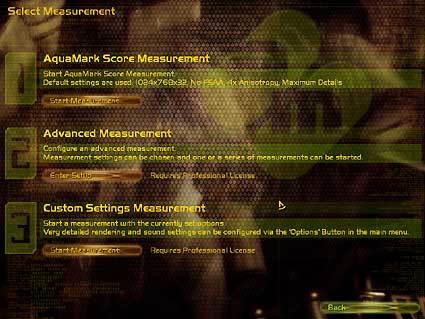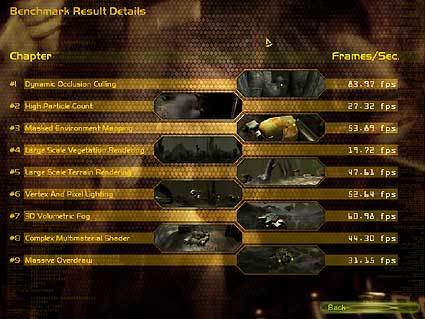Aquamark3: Accurate Benchmarking for Old and New (DirectX9) Apps?
Benchmark-Features
The final results are not only influenced by the graphics card performance but also from the CPU and memory performance of the system. The Krass engine also utilizes the Multitasking capabilities of Intel's HyperThreading technology by dividing certain calculations of the engine into different tasks, including:
- Dynamic-Occlusion-Culling-System for Outdoor Scenarios
- Realtime-Terrain-Tesselation from Quad-Tree based cLOD Data
- Culling and Sorting of Alpha-Blended Particles
AquaMark is fully configurable. All settings run the gamut beginning with screen resolution through detail levels, all of which can be modified. Even automated testing procedures are possible.
Massive also adopted a standard test, the so-called "Triscore". It shows the average frame rate with a fixed test settings multiplied by 1000. It also shows values for CPU and graphics performance, but those scores are rather synthetic since the CPU performance also affects the graphics performance.
The average overall frame rate is calculated by a benchmark run separated in several sub tests scenarios. Each scenario taxes different components in modern game engines. The AquaMark test run is separated into the following:
- Dynamic Occlusion Culling
- High Particle Count
- Masked Environment Mapping
- Large Scale Vegetation Rendering
- Large Scale Terrain Rendering
- Vertex And Pixel Lighting
- 3D Volumetric Fog
- Complex Multimaterial Shader
- Massive Overdraw
Each sub test results in an average frames-per-second score. The final number is the average of all sub tests. To explain the aspects of every test would go beyond the scope of this article, but interested readers can find more information on the background of the single tests in the technical documentation, which can be found in the start menu folder of AquaMark 3.
Get Tom's Hardware's best news and in-depth reviews, straight to your inbox.
Current page: Benchmark-Features
Prev Page AquaMark3 Licence Model Next Page Special Features Of Aquamark3

